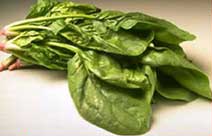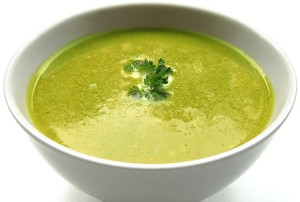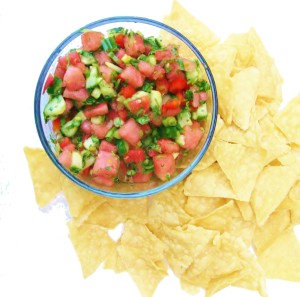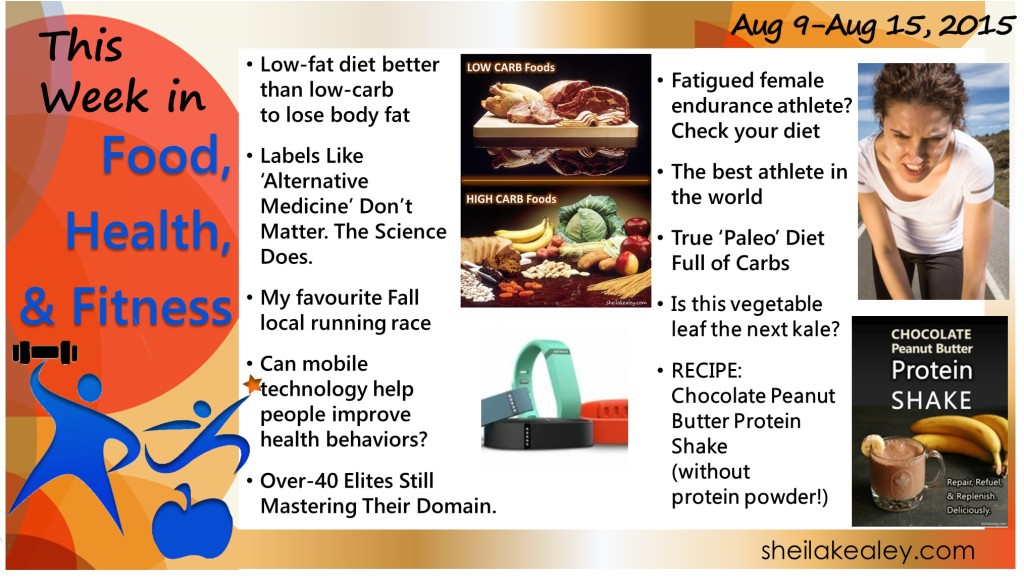This week, read about oats & appetite control, reasons to eat your greens, trendy nutrition advice that could harm, how to recover like a US soccer star, the sports nutrition needs of women, compression garments, bike intervals to improve running, and more.
Cooked Oats Curb Appetite Better than Cold Oat Cereal

A study published this week compared 250 calories worth of instant oats to Honey-Nut Cheerios with the same amount of skim milk. Participants were more full after eating the instant oats, and ate less at lunch 4 hours later. (Journal of the American College of Nutrition).
Earlier research has also found that instant oats are more filling than ready-to-eat cereal. Researchers attribute the increased satiety to how processing affects the soluble fiber (beta-glucan) in the oats, which in turn influences the viscosity (what some describe as the “slimy” feeling of cooked oats). Other research has shown that higher viscosity increases fullness.
I prefer the texture and taste of large flake rolled oats, but instant oats are popular with many because they are convenient and quick to make (you just need to pour boiling water over them). Plain instant oats have the same nutrition content as larger flakes, but are just a smaller particle size (and this can influence factors like blood sugar, fullness, etc.). If you can find plain instant oats, that’s your best bet. But they often contain fake-tasting flavours, quite a bit of sugar and salt, and lots of packaging. It’s not hard to make your own instant oats, and it’s more economical, nutritious, and tasty.
When considering a variety of nutrition factors beyond fullness, a good rule of thumb when it comes to grains, is to opt for the least processed form of the grain.
Eat Your Greens!
 A growing body of research is highlighting the protective effects of nitrate-rich vegetables. Several studies published this week look at the benefits of dietary nitrates and health. Nitrates are inorganic compounds found naturally in soil and water. Dark leafy greens are the richest vegetable sources of nitrates.
A growing body of research is highlighting the protective effects of nitrate-rich vegetables. Several studies published this week look at the benefits of dietary nitrates and health. Nitrates are inorganic compounds found naturally in soil and water. Dark leafy greens are the richest vegetable sources of nitrates.

Lower Blood Pressure. A study published in the journal Clinical Nutrition Research showed that eating nitrate-rich foods can improve vascular health. Researchers from the University of Toronto compared week-long consumption of a daily bowl of soup: either a high-nitrate soup (made with spinach) or a low-nitrate soup (made with asparagus). They found that the spinach soup decreased arterial stiffness after eating it, and lowered blood pressure after 7 days of eating the soup. The authors conclude that
“the study provides support to the potential use of whole food, un-concentrated dietary nitrate found in natural, commonly consumed vegetables like spinach, as an effective way to aid in maintenance of cardiovascular health.” (Clin Nutr Res. 2015 Jul; 4(3): 160–167)
Another study titled “A ‘green’ diet-based approach to cardiovascular health? Is inorganic nitrate the answer?” looks at the beneficial effects of dietary nitrates on health and reviews the evidence of dietary nitrates for the treatment of cardiovascular disease. (Mol Nutr Food Res. 2015 Aug).
Which Foods Are Good Sources of Nitrates? Beets are also a good source or nitrates, and have been studied for their athletic performance-enhancing benefits. You can find out more about nitrates and nitrate-containing foods here.
More Headlines of Interest This Week
- Trendy nutritional advice that’s more likely to make you ill than healthy. Nutrition and health bloggers with poor nutrition advice are popular. Though their is often little or no scientific evidence to back up their claims, many believe that this type of restrictive eating is necessary for good health. An article this week in the Spectator looks at the worrying trend of these self-proclaimed health “gurus” (often slim, attractive women), advising people that they need to adopt certain habits (e.g., avoid gluten, eliminate all sugars, avoid milk, eat vegan or raw) to be healthy. (The Spectator)
- Train, and recover, like a U.S. soccer star. Some insight into the training and recovery strategies used by the US Women’s soccer team. (New York Times)
The article highlights their 5 main recovery strategies (cool down, foam roll, ice baths, compression garments, and sleep). Notably absent is any nutrition strategy, and strategies that lack evidence include ice baths and compression garments (but these might provide a good placebo effect)!
 Women are not small men: How gender dictates nutritional needs during training and recovery. Exercise physiologist Tracy Sims explains how a women’s physiology affects her sports nutrition needs. (Cyclingtips.com)
Women are not small men: How gender dictates nutritional needs during training and recovery. Exercise physiologist Tracy Sims explains how a women’s physiology affects her sports nutrition needs. (Cyclingtips.com)
- Ads say you must earn your Gatorade with exercise. Some clever marketing by the folks at Gatorade. . . although the gist of the ad makes sense “You can’t drink that unless you work up a sweat first,” many would argue that sports drinks are best reserved (but not entirely necessary) for athletic activities lasting more than 1 hour. (Runner’s World).
 Candy Brain. A new study shows that even mild stress, which raises cortisol levels, can negatively influence our food choices and reduce our self-control. (Gretchen Reynolds, reporting on Neuron, Aug 2015).
Candy Brain. A new study shows that even mild stress, which raises cortisol levels, can negatively influence our food choices and reduce our self-control. (Gretchen Reynolds, reporting on Neuron, Aug 2015).
Although reducing stress and figuring out coping strategies is generally a good idea, you can prepare for times of low self-control. Check out my tips (Food Psychology: What is Controlling your Eating?), and have a look at the article below (healthy eating made easier).
- Healthy eating made easier. Unhealthy foods are widely promoted, and relying on self-control to eat well isn’t always the best strategy. This article sums up research showing how simple changes in your surroundings can help you eat more healthfully without extra effort. (Consumer Reports)
- Do Compression Garments Work? Sports scientist Mike Hamlin has conducted several studies on compression garments. He says that overall, there’s little evidence that compression garments improve performance or speed recovery. (Time)
- 15 Minutes on a Stationary Bike Could Make You a Faster Runner. Researchers in the UK show that high-intensity intervals on a bike can lead to better running performance (Runners World, reporting on Journal of Strength and Conditioning Research).
New Recipe: Watermelon Salsa with Mint
 This salsa tastes like summer. Watermelon, mint, and lime combine for a colourful and refreshing dish that is perfect for summer BBQ’s. Serve with pita crisps, tortilla chips, or as a topping for grilled chicken or fish. Watermelon’s vivid pink hue signals the presence of lycopene, a carotenoid with potential disease-fighting properties. Other compounds in watermelon may benefit health: glutathione, an antioxidant, helps keep your immune system in top form and has been studied for its cancer-prevention potential, and L-citrulline is associated with improved exercise performance.
This salsa tastes like summer. Watermelon, mint, and lime combine for a colourful and refreshing dish that is perfect for summer BBQ’s. Serve with pita crisps, tortilla chips, or as a topping for grilled chicken or fish. Watermelon’s vivid pink hue signals the presence of lycopene, a carotenoid with potential disease-fighting properties. Other compounds in watermelon may benefit health: glutathione, an antioxidant, helps keep your immune system in top form and has been studied for its cancer-prevention potential, and L-citrulline is associated with improved exercise performance.
Last Week in Food, Health, and Fitness
